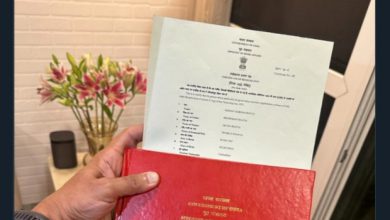Passing a Chinese Maritime ‘Trump Test’

China’s Leninist leadership has rightly been termed the “high church of realpolitik.” Beijing’s leaders believe that even small changes in foreign leaders, correlation of forces, or the relative balance of power have important significance. If they appear in flux, China probes for opportunities. If meeting minimal or manageable resistance, it then pushes further to gain ground. Given the particular uncertainty concerning President-elect Donald Trump’s outlook and policies, and Beijing’s indignation at his statements already regarding both mainland China and Taiwan, he may even face probing without the typical “grace period” arguably accorded his predecessors. How Trump handles such pressure will reverberate across the Asia-Pacific and around the world.
In recent years, China has tested each new American president. The past two faced an early challenge: George W. Bush with increasingly aggressive aircraft intercepts that triggered the April 2001 EP-3 crisis, Barack Obama with the March 2009 Impeccable incident. China appears to engineer tensions or activities to assess a president’s position in an area of its interest and to attempt to alter his decision-making to Beijing’s preferences. While motivations are hard to prove, Trump and his team must certainly prepare for the possibility that at some point Beijing—having never “forgotten” whatever statements and actions may accumulate despite its objections—will push back in a manner that effectively poses a test.
If the past is any guide, Chinese leaders may test the new administration early on. While a trial could take many forms, the last two presidential tests revolved around U.S. surveillance operations in international airspace and waters, to which Beijing continually objects. Given current Sino-American friction points, one possible scenario involves the South China Sea, U.S. Navy vessels, and China’s Maritime Militia. Such a “Trump Test” could involve China’s maritime militia harassing the operations of U.S. warships or surveillance ships in hope that he could be pressured to reduce such activities, thereby accommodating Chinese sovereignty promotion efforts. It might include not only direct tests of U.S. resolve, but also that of America’s regional allies and partners and its commitment toward them; particularly given uncertainty over how the Trump Administration intends to handle longstanding alliances and partnerships. China may see this as an opportunity to weaken the alliance system, which it opposes vehemently. Here the East and South China Seas are equally likely arenas, with Japan, Vietnam, and Indonesia among the leading potential targets. Either way, the Obama Administration’s failure to publicly acknowledge the asymmetric challenge of China’s Maritime Militia on its watch contributes to a looming disconnect in which Beijing and Washington or one of its allies or partners may (eventually) be headed for a tense encounter or incident at sea, without sufficient preparations for its effective management.
Beijing’s broader South China Sea strategy includes advancing disputed claims where it can, delaying resolution of issues it cannot yet settle in its favor, and coercing potential opponents while limiting escalation. Beijing’s longstanding opposition to key principles of international air-and-sea-related law and its growing assertiveness in the South China Sea make it view ‘unapproved’ American activities there as contravening vital interests. To implement that strategy with as little American resistance as possible, and thereby further its unresolved land feature and maritime sovereignty claims without escalating to major power war, it is employing not one but three major sea forces.
China’s Maritime Militia is its Third Sea Force of “blue hulls,” after its Navy of “gray hulls” and Coast Guard of “white hulls.” Increasingly, these forces operate together, with blue hulls operating forward and white and gray hulls backstopping them. Collectively, these are “gray zone” operations: conducted to alter the status quo, and employing coercion as necessary, but without resorting to war.




